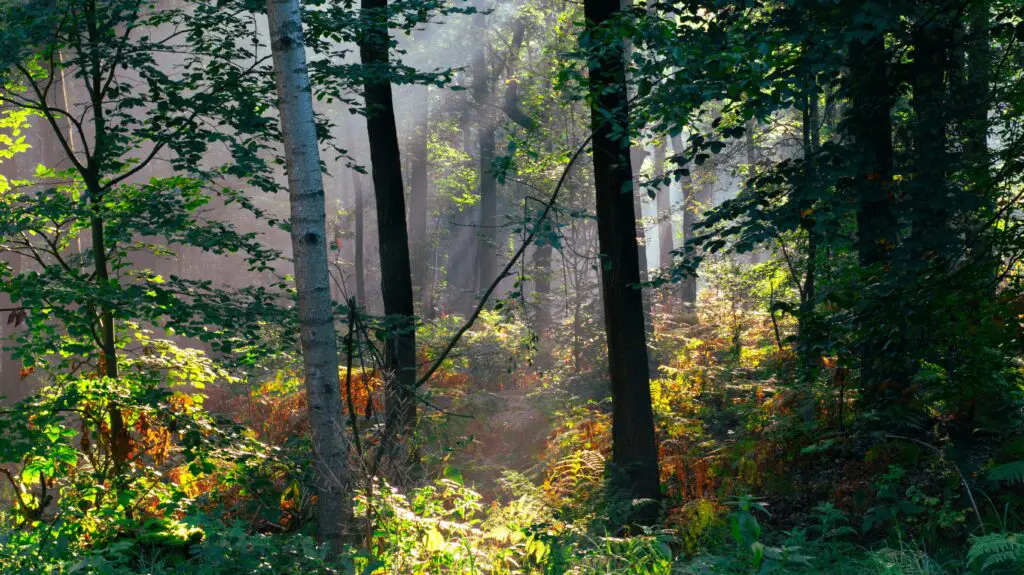The variety of life on Earth is astonishing: rain forests crowd with songbirds, beetles, and monkeys; glowing coral gardens host schools of fish, crustaceans, and anemones; and even a small balcony garden can attract bees and sparrows. Under all these scenes sits a single, powerful idea—biodiversity. It supports the breathing of forests, the cleaning of wetlands, and the pollination of most crops while quietly lifting our quality of life in countless other ways. Yet, despite its usefulness, global biodiversity is in crisis. Over just a few human generations we have drained swamps, logged mountains, over-harvested timber and seafood, and slipped foreign species into careless ecosystems, tipping many natural balances out of joint.
Whats-at-Stake
- Diverse nature keeps food on our tables and filters the water that flows from faucets.
- Reviews from conservation science agree that habitat loss and species decline are speeding forward faster than at any documented moment before.
- Social, economic, and cultural health all stand or fall with ecosystems, and those ecosystems flourish only where many plants and animals continue living side by side.
The following pages explain what biodiversity means, where it can still be found, and why protecting it is as urgent as any challenge we face.
Defining Biodiversity
Biodiversity refers to the variety of living organisms found on Earth, spanning all ecosystems, whether they are on land, in the sea, or in freshwater. The term covers genetic differences within populations, counts of separate species, and the range of habitats and communities they create together. Although documentaries tend to highlight rainforests or reef systems, the concept is just as relevant in city parks or backyard gardens.

The Multiple Facets of Biodiversity
- Genetic Diversity – Genetic variation gives populations the raw material they need to respond to disease outbreaks, climate shifts, and other sudden stressors. When numbers dwindle, as in an endangered species, inbreeding can reduce that variation, leaving the group more vulnerable.
- Species Diversity – Species richness measures how many different species occur in a given location. A mixed woodlot supporting dozens of tree types usually hosts a wider web of insects, mammals, and fungi than a plantation of a single kind. Greater species variety translates into more roles—such as pollinators or decomposers—thereby reinforcing ecosystem stability.
- Ecosystem Diversity – Ecosystems range from tropical rainforests and wetlands to alpine tundra and industrial farmland, each with its characteristic assemblage of plants, animals, and microbes. These living communities interact constantly with soil, water, sunlight, and climate, shaping the services that sustain humanity. Maintaining a mosaic of ecosystem types is therefore essential for the long-term health of Earth as a whole.
Measuring and Monitoring
Species richness-the simple tally of different organisms in an area-is a popular starting point for assessing biodiversity, yet it tells only part of the story. Additional gauges, such as the survival of rare or keystone kinds and the relative balance among populations, often paint a sharper overall picture. Regardless of the yardstick used, however, one fact remains stark: at no previous moment in history has the loss of biological variety occurred so fast or so broadly worldwide.
Where Is Biodiversity Found?
In truth, it would be easier to name the tiny corners of our planet completely free of life than to catalog all the places that teem with it. From scorching desert dunes to frigid polar tundra, organisms devise clever ways to survive and reproduce. Heavily shaped spaces, too-farmlands, apartment-block yards, and roadside reservoir beds-still support fluttering insects, scavenging birds, active microbes, and surprisingly diverse plants.
From Hotspots to Near You
- Global Biodiversity Hotspots – Certain areas, mainly tropical rainforests in the Amazon basin and Southeast Asia, stand out as extraordinary reservoirs of species. These regions shelter vast numbers of endemics-organisms found nowhere else on Earth. Sadly, many such hotspots currently face severe stresses from agriculture, mineral extraction, and spreading cities, putting their unique life forms at acute risk.
- Cultivated Lands – About a quarter of the planets surface is actively farmed, a figure that hides seasonal activity rather than a permanent monoculture. Beneath neat rows of maize, rice, or wheat, room still exists for pollinating insects, soil fungi, and small mammals that go unnoticed from the tractor seat. When growers reduce tillage, lower chemical inputs, and plant cover crops, these working landscapes may produce food and conserve living variety at once.
- Urban Habitats – Modern cities contain green roofs, embedded park strips, overgrown rail yards, and curving riverfronts, patches that add up to a surprising mosaic of habitat next to steel and cement. Each pocket is smaller than any wilderness, yet it supplies bugs, seeds, and hollow stems where creatures can rest or breed. Bees hover around balcony lavender, sparrows nest in old drain pipes, and even urban-adapted predators, from kestrels to the occasional fox, find enough cover to live amid the bustle.
Fragmentation and Change
When forests are cleaved for fields or rivers dammed to hold reservoirs, once-continuous landscapes break apart into isolated fragments. Species forced into shrinking islands of habitat cannot always exchange mates, spread young, or keep their numbers steady over time. Evergreen forests snipped into patches, bleached coral arcs, and drained wetlands all reveal the toll: fewer individuals, lost interactions, and a slower resilience to storms or disease. Every cut or fill weakens the webs that otherwise keep the living world dynamic.
Why Is Biodiversity Important?
The forest that scrubs the air, the bees tripping from flower to flower in our orchards, the marshes that sift pollution from runoff-these everyday helpers often feel free yet cost nothing less than human survival. Working together, species keep these systems running. Take a wetland packed with sedges, bulrushes, and rushes; it traps heavy metals and excess fertilizer far better than a stand of cattails left to fend for itself.
Ecosystem Services That Support Us
- Provisioning services – Supply us with tangible materials we need to live: Food. Fish, livestock, grains, fruit, and nuts-from barley to Brazil nut-come from a Web of species that farmers, foragers, and fishers alike must keep diverse. Fresh water. Mountainside forests and marshland kidneys control the flow, filter on the way, and refill aquifers we rarely see. Raw materials. Timber, rubber, fiber, and a long list of drugs arrive directly from the variety of life around us.
- Regulating services – Work behind the scenes to steady Earths climate and chemistry: Climate regulation. Forests and grasslands act as slow-motion sponges, pulling carbon from the air and locking it into trunks, roots, and soil. Pollination. Bees, butterflies, bats, moths, and small mammals touch blossoms that feed billions; lose them and harvests drop. Waste decomposition. Invisible, hungry microbes, fungi, and invertebrates shred garbage, neutralize poisons, and release the nutrients new plants must have.
- Cultural services – Sustain the spirit and the imagination: Recreation and tourism. Mountain trails, coral reefs, and birding fields pull millions into nature and return income to towns, often to people who protect those places. Spiritual and aesthetic value. Many cultures honor sacred groves or count certain animals as ancestors; their stories ground identity, pass on ethics, and show how deeply life everywhere is interwoven.
- Supporting Services
- Soil Formation: Earthworms, root networks, and microbial activity continuously build and enrich the soil we depend on.
- Primary Production: Through photosynthesis, land plants and phytoplankton sustain the entire food web, supplying energy to every other organism.
- Nutrient Cycling: Decay processes return stored elements to the soil and water, ensuring future crops and wild plants receive what they need.

Impact on Human Well-being
When species vanish, the effects ripple through society in practical ways:
- Food Security: Empty fish nets or fewer bee colonies mean less protein on dinner plates, driving prices up and widening hunger gaps.
- Health: Countless drugs trace back to forest mushrooms or reef sponges; losing those organisms closes off promising cures yet undiscovered.
- Economic Opportunity: Biodiverse areas pull tourists eager for safaris, snorkelling or birding, earnings that often fund schools and clinics locally.
Key Threats to Biodiversity
Nature is resilient, yet human activity now strikes with unprecedented force. The latest science identifies four pressing engines of decline:
Habitat Loss and Land Use Change
Clearing rainforests for soy, damming rivers, and sprawling cities carve up green space, isolating species and weakening populations.
Overexploitation
Hunting, fishing, and logging at unsustainable rates strip ecosystems bare; taking top predators can unravel entire food webs in a single decade.
Invasive Alien Species
When non-native plants or animals arrive-sometimes by accident, sometimes on purpose-they can push native species aside or simply eat them. Ecosystems struggle to regain balance, a problem that hits island habitats and inland waters the hardest.
Pollution
Run-off laden with fertilizers loads lakes and coastal regions with excess nutrients, sparking algal blooms that starve water of oxygen and crowd out many living things. This process, called eutrophication, leaves a visible scar on biodiversity.
Climate Change
Warmer air, shifting rainfall, and more acidic oceans steadily reshape habitats. Sea temperatures that once supported corals now bleach those same reefs during brief heat-blasts, slowly draining color and life from these underwater cities
Combination of Drivers
More often than not, stressors join forces. A forest stripped by logging loses canopy cover, the disturbed soil washes pollutants downstream, and fresh gaps invite invasive species all doing damage that no single issue could achieve alone.
Conclusion
Biodiversity underpins every function that keep people and the planet thriving-food, clean water, climate stability, medicines, even simple beauty. Healthy forests lock away carbon and coral reefs soften storm waves; each service springs from life’s rich variety, for today and tomorrow.
Yet, despite well-documented evidence of its ecological and economic value, biodiversity continues to decline worldwide. The spread of industrial agriculture, pervasive pollution, and patterns of overconsumption drive habitat destruction and accelerate species extinctions. Reversing these trends is politically and economically complex, but the window for meaningful action remains open.
Individuals can still contribute in practical ways: Practice sustainable consumption by reducing food waste, selecting products such as Forest Stewardship Council-certified timber or fair-trade coffee, and minimising single-use plastics, which together ease pressure on the worlds most vulnerable ecosystems. Support conservation initiatives by donating time or resources to community-led projects, national parks, wildlife corridors, and academic research, all of which rely on public engagement to succeed. Advocate for stronger policies by urging lawmakers to establish protected areas, redesign farm subsidies that reward biodiversity-friendly practices and fund scientific assessments that guide recovery efforts.
Ultimately caring for biodiversity is not solely an altruistic goal for rare species; it is a safeguard for human prosperity. Diverse ecosystems underwrite stable food production, filter clean water, supply genetic material for new medicines and enrich cultural identity through natural landscapes. By defending life in all its forms, we help ensure that future generations inherit a planet capable of nurturing creativity, resilience and health.
